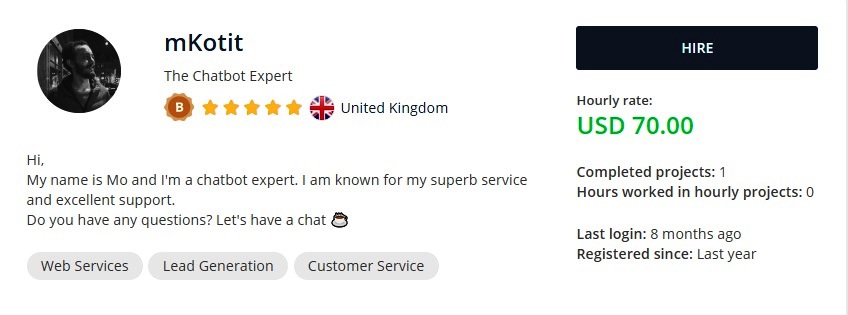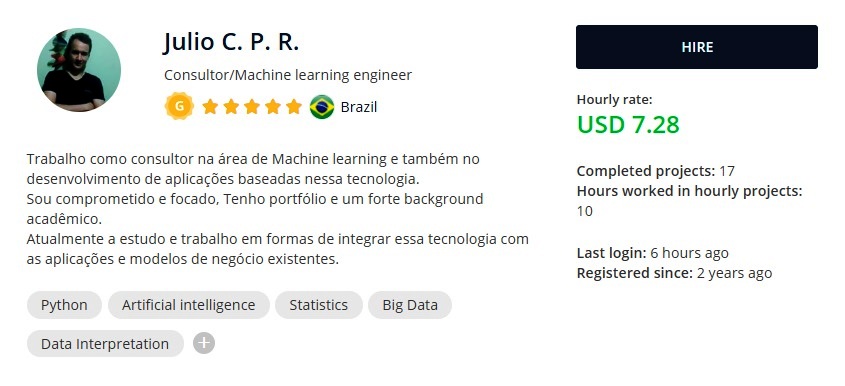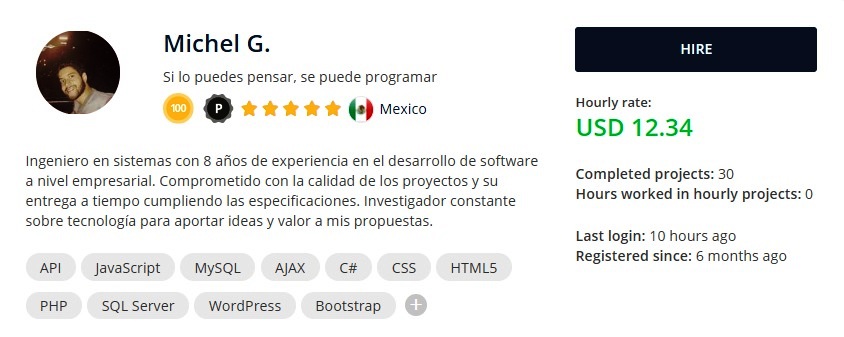While thousands of businesses are closing their physical doors because of the COVID-19 pandemic, thousands of windows are opening in the digital world to allow companies to continue operating and staying afloat during this time of great uncertainty.
Distance, isolation, and the logistical impossibility of seeing customers and even employees in facilities that are intended for this purpose have compelled companies to strengthen their communication, sales, and service tools through other channels.
Despite the empty streets, we can prove that virtual and ecommerce stores, service applications, informative email and social media campaigns, and AI tools that serve as virtual assistants are thriving.
In fact, at Workana, we’ve noticed that lately, many clients have been specifically for profiles that could help them improve a conversation between the interface and user through AI or a chatbot.
But what’s a chatbot, and what does it do?
A Chatbot is a type of Artificial Intelligence algorithm whose purpose focuses on obtaining information and help through a conversational scheme that emulates natural language as much a possible. In other words, it’s a robot that responds to a user’s requests in the same manner that a customer service agent would.
The chatbot is a software programmed to interpret questions or orders in the form of command that, through custom algorithms, result in responses or particular actions. A chatbot’s capacities will directly depend on their programming which can range from basic to complex. Some of their most common features are:
Providing an immediate response to requests by IM (on social media, on a website, or even on WhatsApp.)
- Providing a personalized welcome message on a web page.
- Responding to FAQs
- Guiding users through the buying process and help them to finalize their orders online
- Finding customers and provide them with custom suggestions according to their needs and profiles.
- Identifying when a user is having difficulty on the site and provide support.
The most sophisticated chatbots generally operate as personal assistants and can interpret a wide range of voice commands, but normally a basic chatbot will suffice if you need to optimize your company’s digital strategy. In other words, a chatbot is an affordable and efficient tool.

How will a chatbot improve my digital strategy during quarantine?
A chatbot is a tool that helps you manage an increase in online orders that you will undoubtedly experience during the next few months. If you don’t have an operating chatbot and you use the quarantine to implement it, you’re obtaining a tool that will continue to provide you with a lot of benefits in the long term. Basically, investing in a chatbot is a safe bet if you need to:
- Lighten your workload or your sales and customer service team’s workload.
- Face the increase in online orders head on.
- Communicate immediately about the actions that your organization is taking in response to the crisis.
- Guide the user through the new processes and services such as home delivery (onboarding).
- Give your customers the peace of mind that your organization is available 24/7.
- Improve the user experience across all channels that you use in your digital strategy.
It’s worth mentioning that chatbots can be used for more than just business applications. For example, the World Health Organization launched a Chatbot on Whatsapp that’s designed to provide reliable information and answer any questions related to COVID-19.
What kind of chatbots exist?

Chatbots are programs that receive and interpret commands that in turn provides specific responses. The difference between chatbots is derived from their level of complexity and the type of channel on which they interact with the user (text, voice, multimedia.)
A few examples of chatbots that most of us have interacted with are:
ITR Chatbot (Interactive Text Response) or “multiple choice”
These chatbots are the most basic, but they are extremely useful for guiding customers through standardized processes by using predefined responses. For example, they can ask you if you want to order a pizza or check the menú, if you want a large or medium pizza, what ingredients you want, if you want a side order, your address, your phone number, etc.
Smart Chatbots
Smart Chatbots are more complex than ITRs because instead of just guiding the user, they can interpret requests through a more natural language. For example, if the user types in the phrase “I want to order a large pepperoni pizza with extra cheese,” an ITR wouldn’t be able to respond adequately, but a smart chatbot would be capable of answering in a congruent way with a specific action: it would ask if you want a side dish as well as beginning to fill out the order form.
These “Word-Spotting” chatbots are hybrids of ITR and Smart Chatbots that work especially well when they are emulating a sales executive or customer service agent.
Some Smart chatbots also have the ability to “learn,” or through statistical calculations of the past interactions, they can increase their current interactions based on user preferences or contextual trends.

Artificial Intelligence
These are the most complex chatbots, and they generally operate as personal assistants. They use a voice as an interface and make things easier when it’s time to be able to order a pizza by simply handing over the request to Siri, Alexa, or Google. However, it’s almost always necessary to “teach” AI a “skill” or particular ability that trains it to know how to act and what service to connect to when you’re making a specific request.
How can I integrate a chatbot into my digital strategy?
You may already be convinced that a chatbot is a good solution, but you may not know how to integrate one into your sales and service process. Don’t worry; it’s a lot less complicated than it sounds.
The advantage to using chatbots is that you can configure them to operate on your website, social media accounts, and even your messaging apps like WhatsApp Business. Ideally, you’d identify where you receive the most orders, the kind of questions that your customers ask, and what kind of support you’re looking for before setting up a chatbot.
For example, maybe you own a small pizza chain, and your delivery orders are increasing on WhatsApp. A chatbot can respond to the messages immediately offering menú options and automatically sending you the orders. This will significantly decrease your workload so all you have to do is receive the orders and send them.

Who can help integrate a chatbot into my digital strategy?
At Workana, you can find freelancers specialized in programming and creating this type of chatbot. If you’re still not sure about what the best type of chatbot is for your company, all you have to do is clarify your requirements in the project description, and freelancers will send you proposals explaining how they can help you get what you want.
You can also directly search for the most experienced freelancers to invite them to your project. All you have to do is go to “hire”> “find freelancers” and choose the professional field “Programming and Technology.” In the skills box, you’ll find “Artificial Intelligence,” and in the keyword box on top, you can type in words such as:
- Chatbot
- Conversational UX
- Machine learning
Here are a few examples of freelancers who can help you integrate a chatbot into your strategy:





Conclusion:
At Workana, we understand that quarantine is compelling many people who aren’t used to shopping online or use digital platforms to manage projects or procedures to depend on these platforms.
A chatbot can help your business and your users get through this stage of learning and familiarizing themselves with new service and sales channels. Many companies will make the most of this apparent “inactivity” of these months in order to harness the power of digital tools and come back stronger, which is why the competition will be even greater, and having a plan in place to face this challenge is imperative.
Is your business doing everything it can to prepare for the future?
—
You might also be interested in:
- Now More Than Ever, Understanding and Leveraging the Benefits of 4.0 Work is Essential to Scaling and Strengthening Your Business
- Are you ready to face the new labor pattern?
- Have you ever thought of building up a commercial team of freelancers?
- Scalability and freelancing: how remote work keeps you competitive in the marketplace
- How to take the first step in using BIG DATA with help from a freelancer
- UX Writing, the power of words in the User Experience
- I Joined Workana… Now What?





